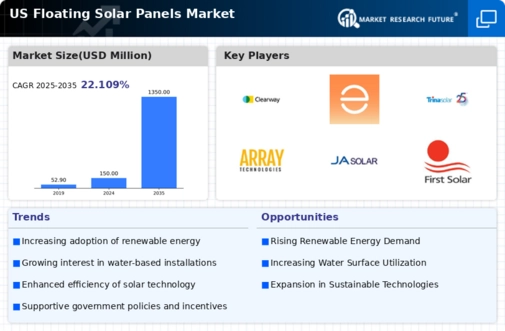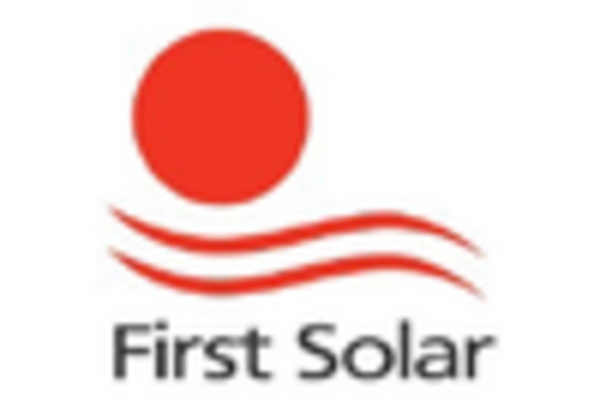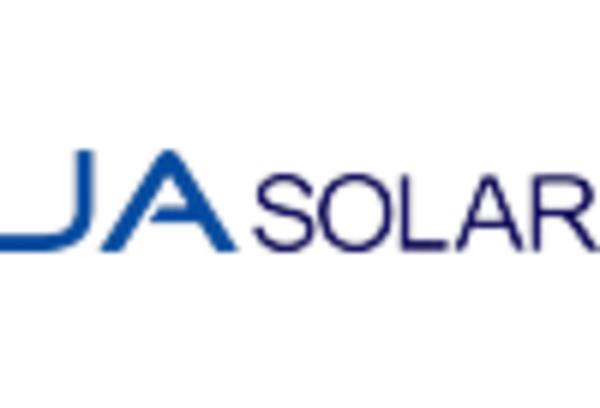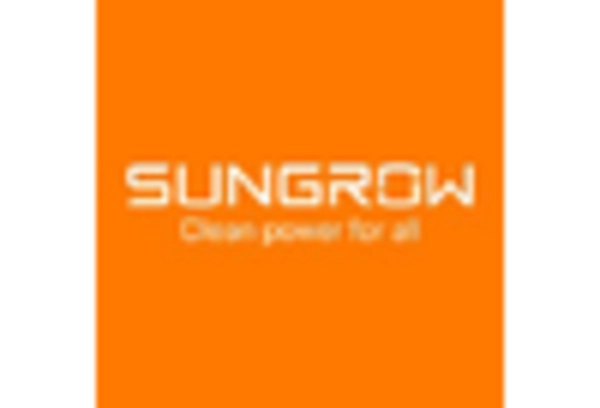Rising Energy Demand
The increasing energy demand in the US is a pivotal driver for the floating solar-panels market. As the population grows and urbanization accelerates, the need for sustainable energy solutions becomes more pressing. Floating solar panels offer a unique advantage by utilizing water bodies, which are often underutilized for energy generation. According to recent estimates, energy consumption in the US is projected to rise by approximately 20% by 2030. This surge in demand necessitates innovative solutions, and floating solar technology appears to be a viable option. The floating solar-panels market is likely to benefit from this trend, as it provides a dual advantage of energy generation and land conservation, making it an attractive choice for both public and private sectors.
Cost-Effectiveness of Installation
The cost-effectiveness of installing floating solar panels is a significant driver for the floating solar-panels market. Recent advancements in technology have led to a reduction in installation costs, making it more accessible for various stakeholders. Floating solar systems can be installed on existing water bodies, which reduces land acquisition costs and minimizes environmental impact. Reports indicate that the cost of floating solar installations has decreased by nearly 30% over the past few years, enhancing their appeal. This trend suggests that the floating solar-panels market is poised for growth as more entities recognize the financial benefits of adopting this technology. Furthermore, the potential for increased energy generation efficiency on water surfaces adds to the economic viability of these systems.
Government Incentives and Subsidies
Government incentives and subsidies play a crucial role in promoting the floating solar-panels market. Various federal and state programs are designed to encourage renewable energy adoption, including tax credits and grants for solar projects. The Investment Tax Credit (ITC) allows for a 26% tax credit on solar installations, which significantly lowers the financial burden on investors. Additionally, states like California and New York have implemented specific programs to support floating solar initiatives, further stimulating market growth. The floating solar-panels market stands to gain from these supportive measures, as they not only enhance the financial feasibility of projects but also align with broader sustainability goals set by government entities.
Environmental Sustainability Initiatives
The growing emphasis on environmental sustainability is a key driver for the floating solar-panels market. As climate change concerns escalate, there is a heightened focus on reducing carbon footprints and promoting renewable energy sources. Floating solar panels contribute to this initiative by generating clean energy while minimizing land use. They also help in reducing water evaporation from reservoirs, thereby conserving water resources. The floating solar-panels market is likely to thrive as more organizations and municipalities adopt sustainability goals. Recent surveys indicate that over 70% of US companies are prioritizing sustainability in their operations, which could lead to increased investments in floating solar technologies as part of their environmental strategies.
Technological Innovations in Solar Energy
Technological innovations in solar energy are driving advancements in the floating solar-panels market. Continuous research and development efforts are leading to more efficient solar cells and improved floating structures that enhance energy capture and durability. Innovations such as bifacial solar panels, which can capture sunlight from both sides, are gaining traction in the floating solar sector. These advancements not only increase energy output but also improve the overall efficiency of floating solar installations. The floating solar-panels market is expected to benefit from these technological breakthroughs, as they provide a competitive edge in energy generation. As technology continues to evolve, the potential for enhanced performance and reduced costs may further accelerate market growth.

















Leave a Comment